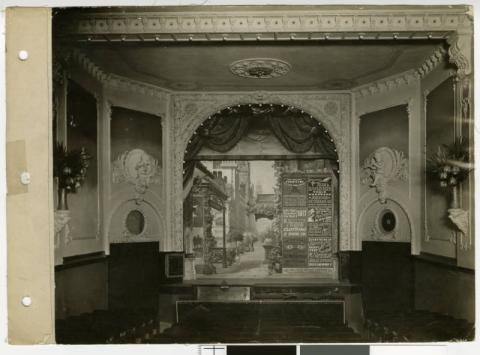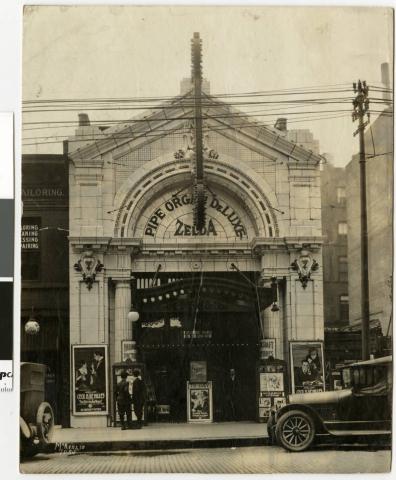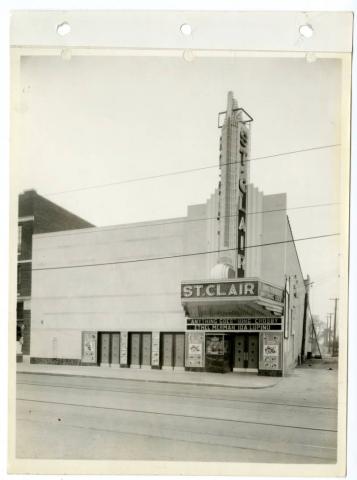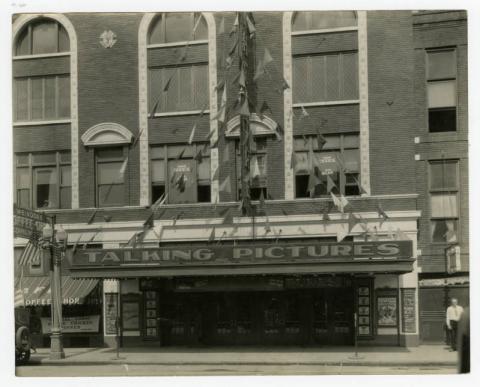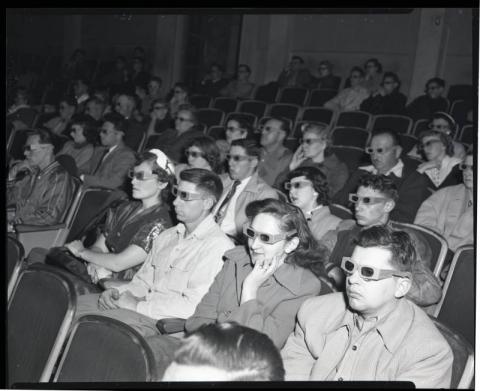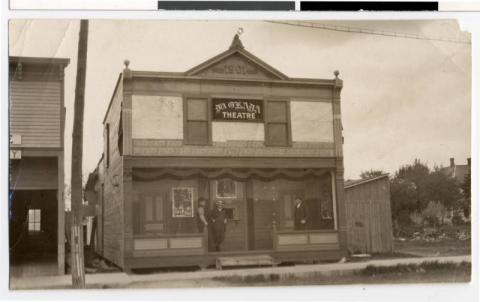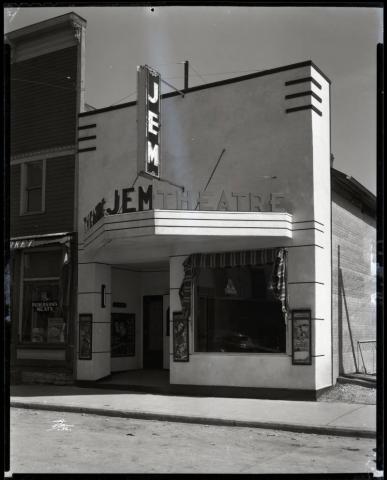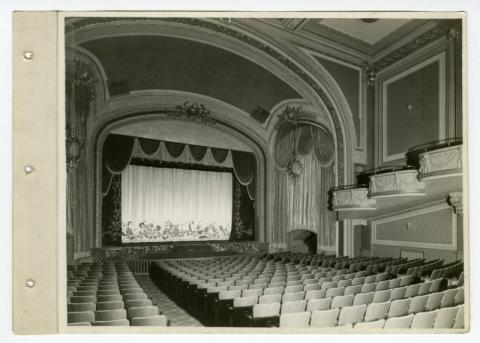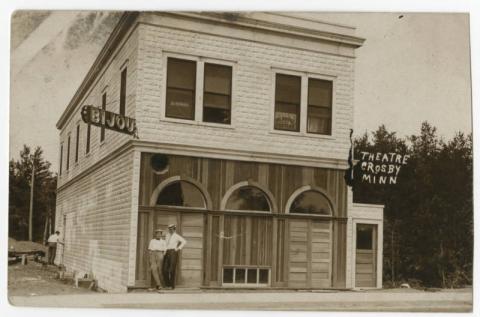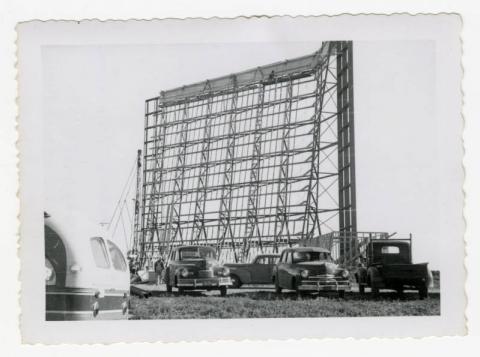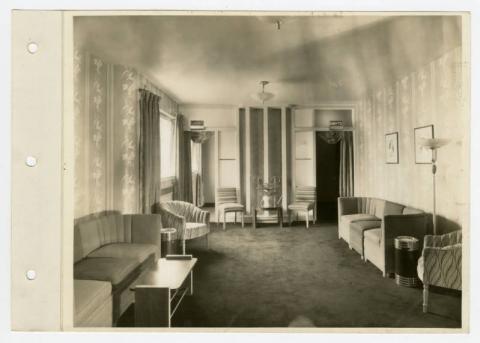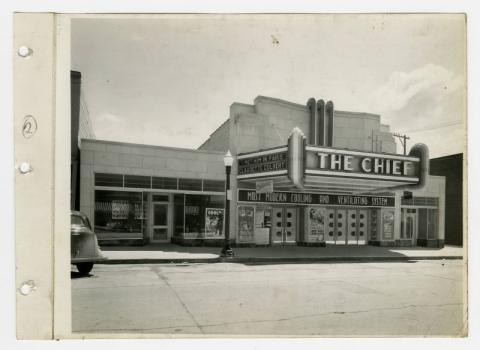Primary Source Set
by Beth Staats, Reference Outreach & Instruction Librarian, Minitex
Architecture Sports and Recreation
By the early 1920's most towns in America had a movie theater, and Minnesota was no different. Movie attendance dramatically increased after 1927 with the arrival of sound films. A large part of the movie watching experience had to do with the theaters in which the films were shown. Spectacular architecture, innovative technology, and the ability to accommodate large numbers of moviegoers were important aspects of the great movie houses of the 1930s.
By creating architectural fantasies full of “exotic ornament and colors to give an atmosphere where the mind is free to frolic and become receptive to entertainment,” theater designers were on the cutting edge of architecture. Rich extravagant adornment was considered necessary to express the entertainment and fantasy of going to the movies and to make the patrons feel like millionaires, forget their daily urban industrial existence and relax in a land of romance.
Motion pictures produced big changes in American life. Movies provided an escape, or change, from the day-to-day grind of life and they were an important social force. Liebenberg and Kaplan, Architects (1919-1969), were noted for designing more than 200 motion picture theatres in the Upper Midwest, many of the early ones featuring an art deco style. Nearly all modern theatre design can be traced back to the theatrical traditions established by the Greek-speaking peoples of the Mediterranean starting in the 6th century bce.
Discussion Questions & Activities
- How did "machine age" innovations change American life in the Twenties?
- In what ways have today's home theaters tried to duplicate the movie-going experience?
- Looking at the theater architecture of the images in this set, in what ways do they continue to reflect Greek theatrical tradition?
- What architectural similarities and differences do you see in this image set?
- What did the movie-going experience offer that watching television at home did not (and vice versa)?
- What kinds of expectations did early patrons of movie theaters have? Has that changed over time? If so, how?
- Which of the theaters in this set feature an art deco style? What are the distinguishing features of art deco architecture?
- What do you think was the reason for the short-lived popularity of drive-in movie theaters? Was it the rise in the convenience of television or do you think the oil crisis of the 1970's played a role?
- Using free online design software like SketchUp Make or just simply pen and paper, design your own movie theater. What kind of architectural elements would you include? What would the layout look like? What amenities would you have?
- Debate: Movie theater vs. Movies at home. What are the advantages and disadvantages of each experience?
eLibrary Minnesota Resources (for Minnesota residents)
"At The Picture Show." American History 44.5 (2009): 16. MasterFILE Premier. Web. 21 Feb. 2017.
"First Nickelodeon Film Theater Opens, June 1905." Historic U.S. Events, Gale, 2012. Student Resources in Context, link.galegroup.com/apps/doc/BT2359030329/SUIC?u=mnsminitex&xid=3a564db9. Accessed 21 Feb. 2017.
MILLER, LYNN, et al. "A Night At The Drive-In." American Road 12.2 (2014): 26. MasterFILE Premier. Web. 21 Feb. 2017.
"Motion-picture technology." Britannica School, Encyclopædia Britannica, 8 Jan. 2016. school-eb-com.content.elibrarymn.org/levels/high/article/motion-picture-technology/110700. Accessed 17 Jul. 2019.
Additional Resources for Research
Kane, Lucile M. and John A. Dougherty. Movie debut: films in the Twin Cities, 1894-1909. Minnesota History, Vol. 54, No. 8 (Winter, 1995), pp. 342-358. Accessed 22 October 2024.
Krefft, Bryan and Neil Carlson. Minnesota Theater. Cinema Treasures. Web. Accessed 22 October 2024.
McKeig, Cecelia. "Chief Theatre (Paul Bunyan Playhouse), Bemidji." MNopedia, Minnesota Historical Society. Accessed October 22, 2024.
Randolph, Edgar. "Early Minneapolis theaters." Minnesota History, Vol. 9, No. 1 (Mar., 1928), pp. 31-38. Accessed 22 October 2024.
Published onLast Updated on
